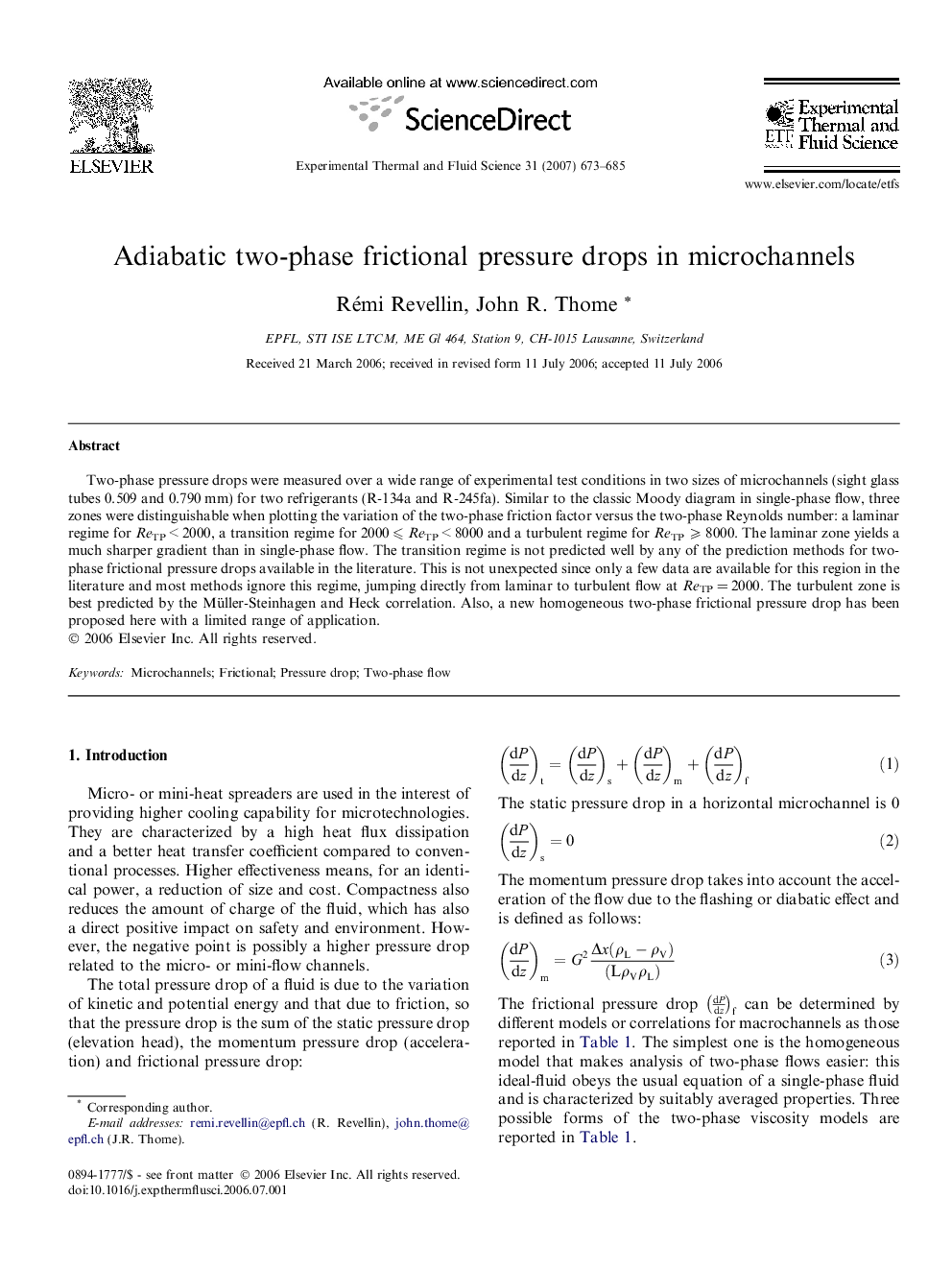| Article ID | Journal | Published Year | Pages | File Type |
|---|---|---|---|---|
| 652445 | Experimental Thermal and Fluid Science | 2007 | 13 Pages |
Two-phase pressure drops were measured over a wide range of experimental test conditions in two sizes of microchannels (sight glass tubes 0.509 and 0.790 mm) for two refrigerants (R-134a and R-245fa). Similar to the classic Moody diagram in single-phase flow, three zones were distinguishable when plotting the variation of the two-phase friction factor versus the two-phase Reynolds number: a laminar regime for ReTP < 2000, a transition regime for 2000 ⩽ ReTP < 8000 and a turbulent regime for ReTP ⩾ 8000. The laminar zone yields a much sharper gradient than in single-phase flow. The transition regime is not predicted well by any of the prediction methods for two-phase frictional pressure drops available in the literature. This is not unexpected since only a few data are available for this region in the literature and most methods ignore this regime, jumping directly from laminar to turbulent flow at ReTP = 2000. The turbulent zone is best predicted by the Müller-Steinhagen and Heck correlation. Also, a new homogeneous two-phase frictional pressure drop has been proposed here with a limited range of application.
